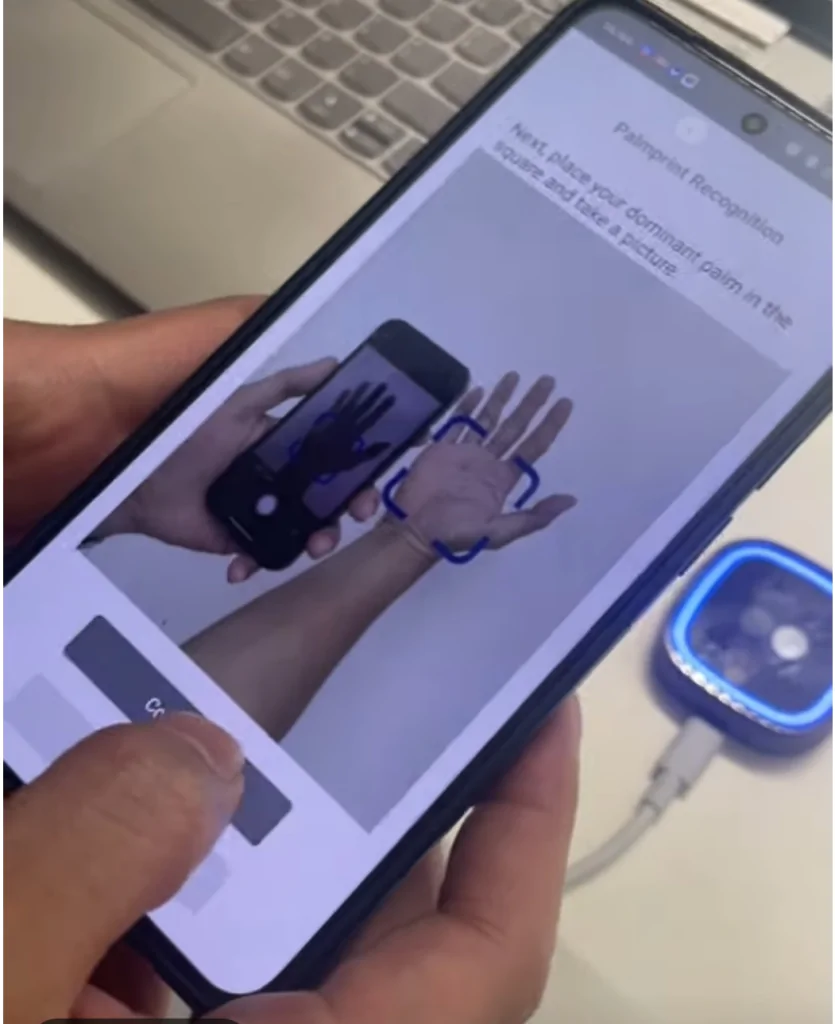When we first started preparing to promote palm vein technology — specifically, our Palm Vein Reader solution — we encountered plenty of skepticism from industry peers and decision-makers.
I asked them directly: What’s holding you back?
The most common response was:
“Palm vein registration is too complicated. You need a device with a palm vein module to register new users. It’s nothing like face recognition, where you can just use your phone camera.”
I completely understand where that comes from. Lowering user friction is critical for any biometric technology to scale.
But instead of seeing that as a barrier, we decided to solve it.
Today, I’m proud to say:
We’ve made palm vein registration as simple as taking a photo.
Our solution allows users to register their palm vein data by capturing palm images with their smartphone.
Later, authentication is done through a Palm Vein Reader, which pairs that registered data with a secure device-level match.
In other words, complexity is no longer an issue.
Why Palm Vein is a Powerful Alternative
Once the registration barrier was removed, it became even clearer that palm vein recognition has advantages facial recognition cannot offer:
- No issues with facial hair, makeup, or hairstyle changes
- Unaffected by skin color or external factors
- Works reliably in low-light or variable lighting conditions
Privacy-friendly: palm vein patterns are inside the body and cannot be captured without the user’s consent
- Completely contactless, making it more hygienic and suitable for public environments
Enhanced Security — Built In
In addition to convenience, we focused on security.
Our Palm Vein Reader devices and algorithms are equipped with two critical security layers:
✅ Liveness Detection
Our algorithm detects live tissue signals during the capture process.
This prevents spoofing attacks using printed images, videos, or fake models.
✅ Algorithm Encryption
All palm vein templates are encrypted — both in storage and during transmission — using multi-layer security protocols.
Even if intercepted, the data cannot be reverse-engineered into original palm vein images, ensuring privacy and compliance with global security standards.
What We’ve Learned
Despite showing this solution in action, some people still respond with the same outdated objections:
“It’s too complex. Palm vein is difficult to implement.”
That’s when I realized:
These responses aren’t about technical barriers — they’re about cognitive barriers.
Some people simply choose not to update their understanding.
So should we try harder to convince them?
No.
You can’t wake someone who’s pretending to be asleep.
Instead, we keep building.
We keep showing.
And we keep supporting those who are ready to move forward.
The Future is Already Here
Palm vein technology — and the Palm Vein Reader — are no longer concepts of the future.
They are already being used in government services, smart transportation systems, financial institutions, and healthcare facilities.
If you’re curious to see how easy and secure palm vein registration can be, take a look at our demo video.
You’ll see exactly how users can register with just their phone, and authenticate securely via a Palm Vein Reader.
If you’re looking for a biometric technology that is more secure, less intrusive, and highly adaptable — we’d love to talk.



